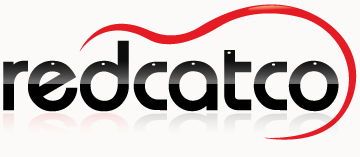Social For Internal Comms – Social Media Workplace
A lively panel here today at the Social Media Workplace conference. The afternoon panel on Social Media for employee communications lead to a lively discussion. The panel consisted of:
- Jenni Wheller, SSP UK.
- Rebecca Richmond, Melcrum.
- Christian McMahon, Global CIO, Jamaza.
- Justin Hunt, Social Media Leadership Forum.
- Doug Shaw, What Goes Around.
Interesting snippet from Rebecca from their recent survey – 50% of people were unsure of the business case for social media within the business (although 50% were).
Question: Are the senior leaders the right audience to launch a social tool to?
Justin responded that a lot of senior executives aren’t big users of social media outside of work. Is it reasonable to ask your staff to use them if you (as a leader) aren’t using the tools yourself? Justin reiterated a point I drew out during my presentation: You need to create a (safe) place for people to fail. Tools can change people’s experience.
Rebecca noted that leaders are risk averse – that can make them a difficult group, but that their buy in can help with the broader roll out. Jenni strongly argued that you shouldn’t force social media on people – it’s about giving the people the opportunity to use the tools, in an integrated way. Doug suggested getting back to understanding “why” you are doing it, and that the answer is there. Understand what works for the users. Not all users in a business are necessarily even on-line – at least during the course of their business – for example, shop floor staff (although technology is increasingly closing those gaps).
Question: Is employee engagement a fad?
Doug said he’s just trying to make work better – maybe employee engagement is an unfortunate tag? But there is something about letting go of the ‘command and control’ Taylorist model that has dominated recent centuries. There have been bad, as well as good, things done in the name of employee engagement.
Justin said it was about the delivery, and giving people chances to contribute. Jenni said it is inescapable, issues of work-life balance and fostering discretionary effort was essential. Rebecca said it isn’t a fad, because it’s not new, it’s just coming to the fore again now because senior leaders are panicking. It’s about what the business’s “employee value proposition” is, and ties into transparency, corporate social responsibility. Employee’s want to have an impact on their customer’s experience – a key business issue.
A strong theme through out the day was: Problem first. Technology second. It’s all too easy to say “social technology is the answer. What was the problem?” – be pragmatic, and start with a well defined problem was the wise advice. As employees become more comfortable with using social media personally, they are more will and expectant about using it at work.
Finally, the issue of failure, and it’s inherent ties with innovation and experimentation, was revisited multiple times. Businesses leaders can be very nervous about failure, and often rightly so, but it is an inherent part of the learning process and innovation, I defer to Edison.



[…] Social For Internal Comms – Social Media Workplace | redcatco blog A strong theme through out the day was: Problem first. Technology second. It’s all too easy to say “social technology is the answer. What was the problem?” – be pragmatic, and start with a well defined problem was the wise advice. […]